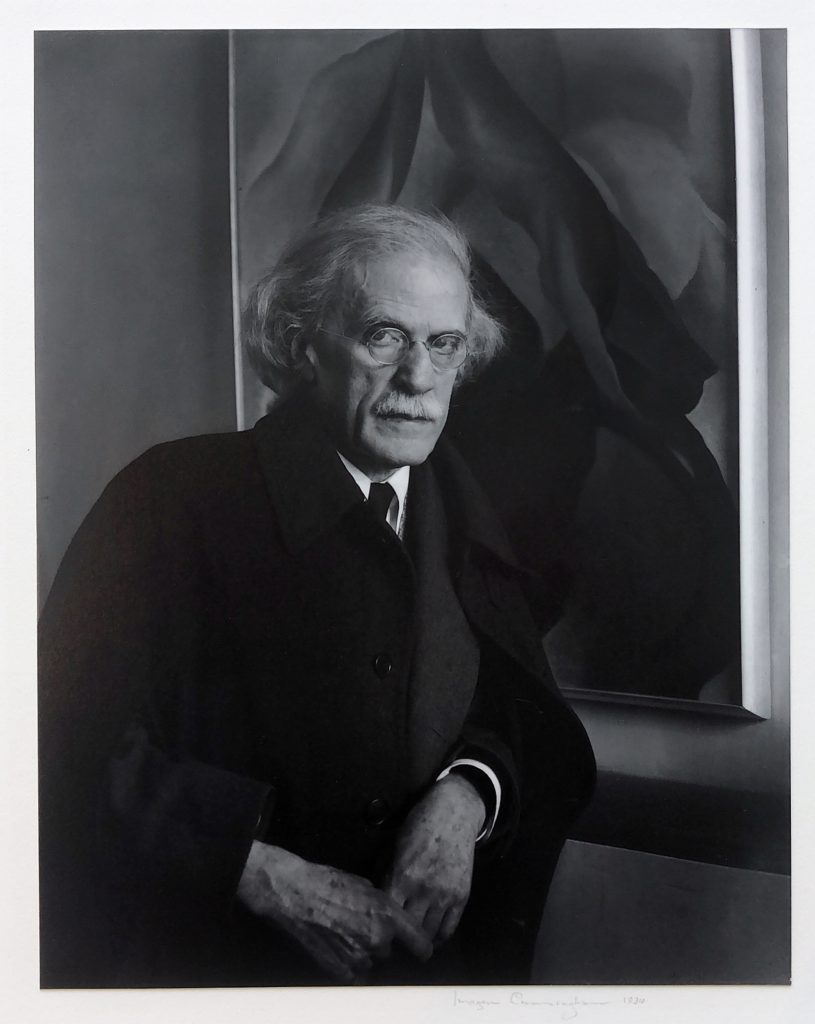Lydia McGinn 2022

When looking at any piece of art, it is difficult to differentiate between an artist’s intention and the art’s effect. In Imogen Cunningham’s photographic portrait of Alfred Stieglitz, this challenge is amplified by the simultaneous presence of three artists. In Cunningham’s black and white photo, Stieglitz stands slightly left of center, leaning against the wall of his gallery in front of a large, framed painting by Georgia O’Keeffe. The undulating forms of O’Keeffe’s work take up roughly half of the photo’s background. Her painting’s position in the upper right corner of the photo balances the form and color of Stieglitz’s dark coat, while the diagonal formed by Stieglitz and the painting adds a sense of compositional movement and highlights Cunningham’s original approach to portraiture.
Staring out at Cunningham, and, consequently, the viewer, from his own gallery, Stieglitz’s expression appears enigmatic and knowing. His sideways gaze is intensified by his serious expression, and he seems to not only see but scrutinize the photographer. His professional confidence and severity are amplified by his heavy, dark, and formal clothing, which acts as both a barrier between Stieglitz and the viewer, and a formal link between Stieglitz and the framed O’Keeffe painting behind him. As Stieglitz’s tilted posture draws the viewer’s gaze to the painting, the folds and contours of his coat echo the billowing, layered nature of O’Keeffe’s iconic artistic style, strengthening the link between the two. This link, combined with the way Stieglitz is positioned to conceal a portion of the painting, communicates a level of possession over O’Keeffe’s work, and by extension, the artist herself. The photo’s suggestion of control further complicates the power dynamic between Stieglitz and O’Keeffe, whose artistic partnership and marriage fractured the bounds between professional, personal, and creative.
The portrait ultimately serves to present Stieglitz as an intense, elevated, intellectual member of the art world, but how much of this representation is due to Stieglitz’s choices of self-presentation, as opposed to Cunningham’s compositional choices, or the invocation of O’Keeffe’s own prestige and style? The impossibility of answering this question makes explicit the endless intertwining, collaboration, and influencing that, whether intentional or not, constantly underscores the creation of art.
Bibliography
Cunningham, Imogen. Alfred Stieglitz At An American Place, 1934. Gelatin silver print, 14 by 11 in. Seattle, G. Gibson Gallery.